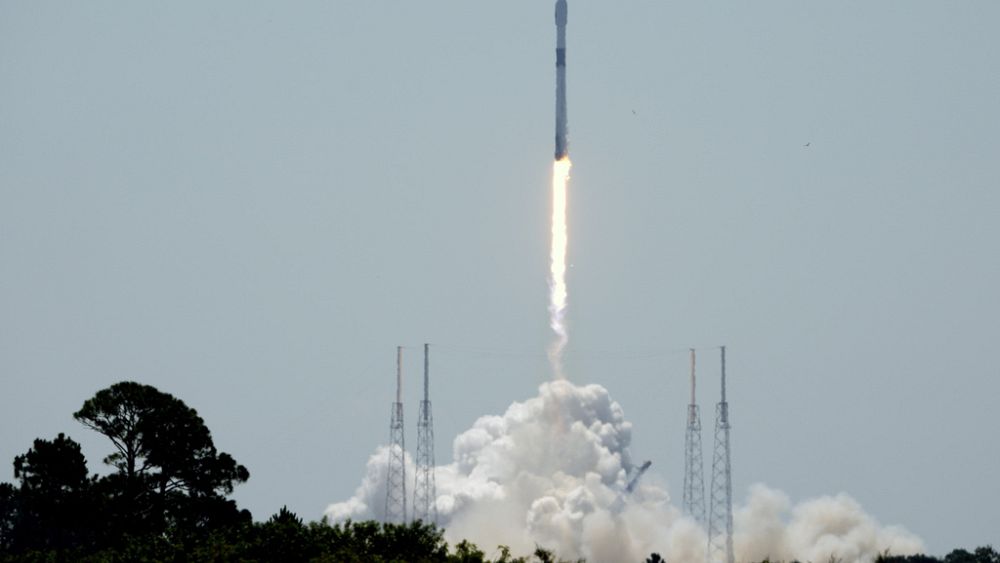
ESA's Euclid space telescope was launched for a six-year mission to shed light on dark energy and matter and chart the largest-ever map of the universe.
A European space telescope blasted off on Saturday on a quest to explore the mysterious and invisible realm known as the dark universe.
SpaceX launched the European Space Agency’s (ESA) Euclid observatory toward its ultimate destination 1.5 million km away, close to where the James Webb Space Telescope is in orbit.
It will take a month to get there and another two months before it starts its ambitious six-year survey this fall.
Flight controllers in Germany declared success nearly an hour into the flight, applauding and shouting "yes" as the telescope phoned home after a smooth lift-off.
What is Euclid's mission?
Named for antiquity's Greek mathematician, Euclid will scour billions of galaxies covering more than one-third of the sky.
By pinpointing the location and shape of galaxies up to 10 billion light-years away - almost all the way back to the cosmos-creating Big Bang, scientists hope to glean insight into the dark energy and dark matter that make up most of the universe and keep it expanding.
Scientists understand only 5 per cent of the universe: stars, planets, and us.
The telescope's highly anticipated 3D map of the cosmos will span both space and time in a bid to explain how the dark universe evolved and why its expansion is speeding up.
The lead scientist for the €1.4 billion said Euclid would measure dark energy and dark matter with unprecedented precision.
"It’s more than a space telescope, Euclid. It’s really a dark energy detector," Rene Laureijs noted.
Euclid - which is 4.7 m tall and almost as wide, sports a 1.2-metre telescope and two scientific instruments capable of observing the cosmos in both visible light and the near-infrared.
A huge sun-shield is designed to keep the sensitive systems at properly frigid temperatures.
Upcoming Roman telescope mission
NASA, which contributed Euclid’s infrared detectors, has its own mission coming up to better understand dark energy and dark matter: the Roman Space Telescope, which is due to launch in 2027.
Billed as NASA's successor to the James Webb telescope, the Nancy Grace Roman Space Telescope will usher in "a new age for astronomy," one of the ESA scientists working on the project told Euronews Next.
Its lenses will allow it to capture a more panoramic view of the universe, allowing it to collect an unprecedented amount of data.
Just as NASA contributed to Euclid, ESA is contributing some of the technology for Roman, in exchange for access to the data.
The data gathered by Euclid will complement that collected by Roman, as scientists attempt to map the universe with the largest amount of data ever collected on a NASA mission.
The US-European James Webb telescope, which went into service in July last year, can also join in this quest, officials said.
Euclid was supposed to launch on a Russian rocket from French Guiana in South America, Europe’s main spaceport.
The European and Russian space agencies cut ties following the invasion of Ukraine last year, and the telescope switched to a SpaceX ride from Cape Canaveral.
Waiting for Europe's next-generation, yet-to-fly Ariane rocket would have meant a two-year-plus delay, according to project manager Giuseppe Racca.
https://news.google.com/rss/articles/CBMidWh0dHBzOi8vd3d3LmV1cm9uZXdzLmNvbS9uZXh0LzIwMjMvMDcvMDIvZXNhcy1ldWNsaWQtc3BhY2UtdGVsZXNjb3BlLWxhdW5jaGVkLXRvLWRpc2NvdmVyLWRhcmstZW5lcmd5LWFuZC1kYXJrLW1hdHRlctIBAA?oc=5
2023-07-03 12:40:31Z
CBMidWh0dHBzOi8vd3d3LmV1cm9uZXdzLmNvbS9uZXh0LzIwMjMvMDcvMDIvZXNhcy1ldWNsaWQtc3BhY2UtdGVsZXNjb3BlLWxhdW5jaGVkLXRvLWRpc2NvdmVyLWRhcmstZW5lcmd5LWFuZC1kYXJrLW1hdHRlctIBAA
Tidak ada komentar:
Posting Komentar